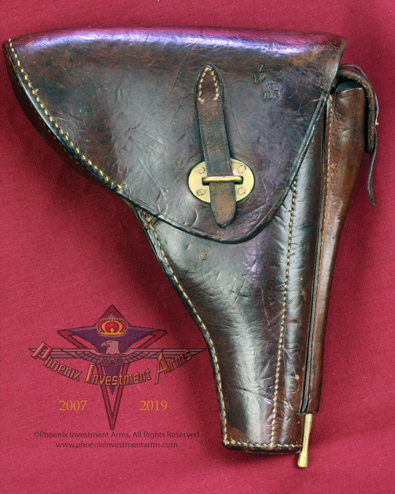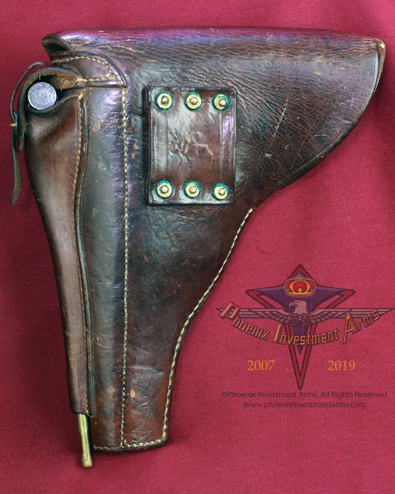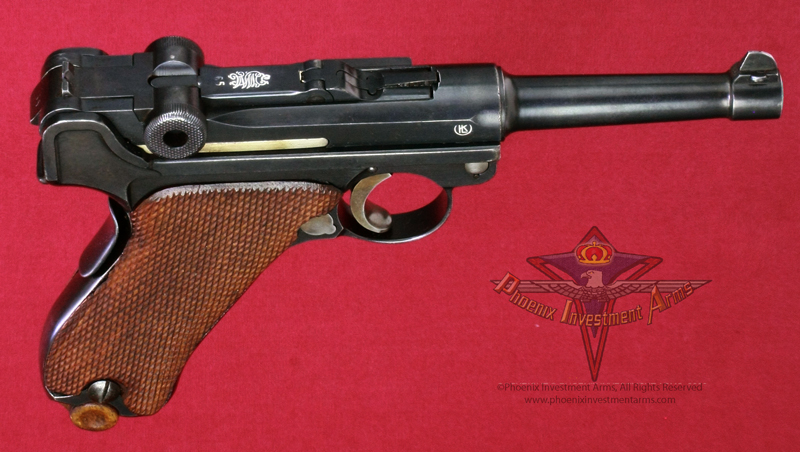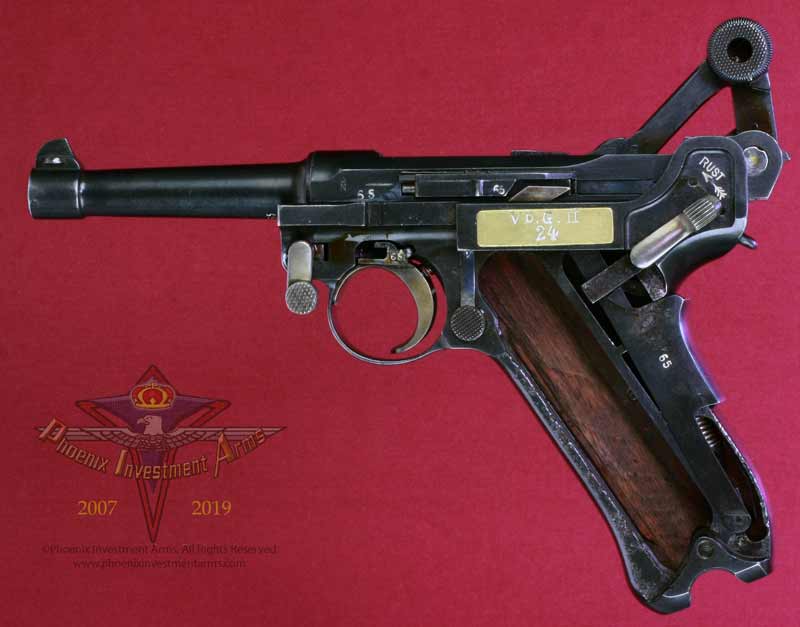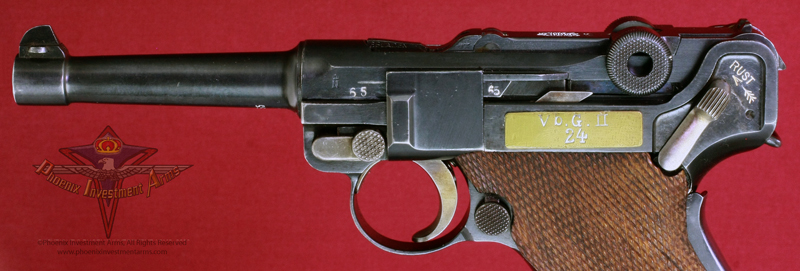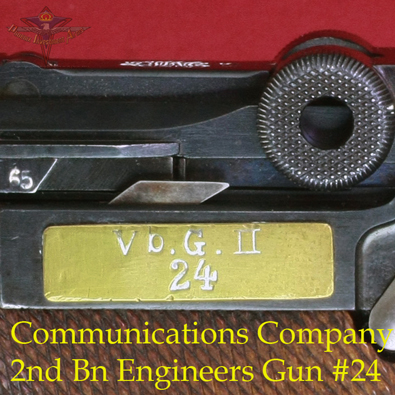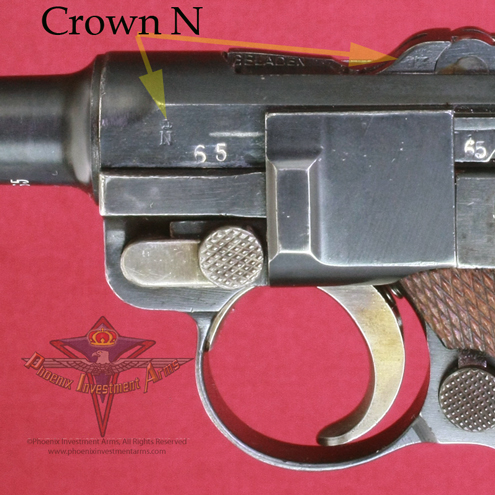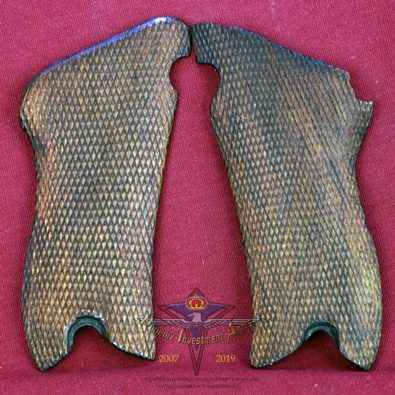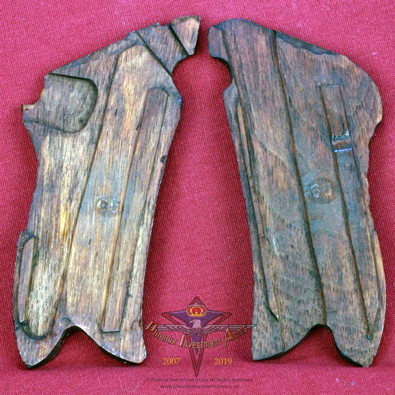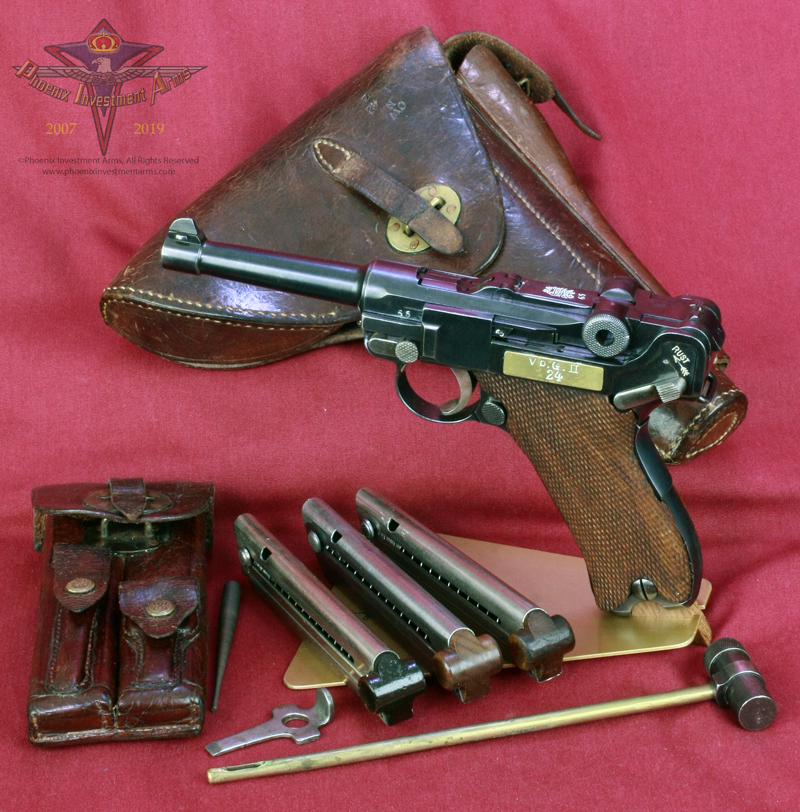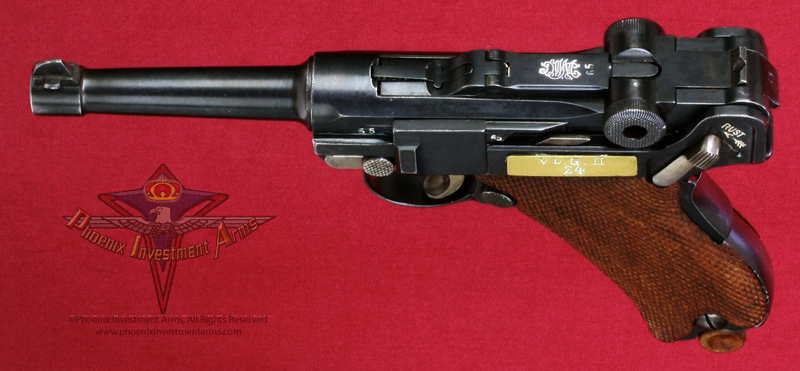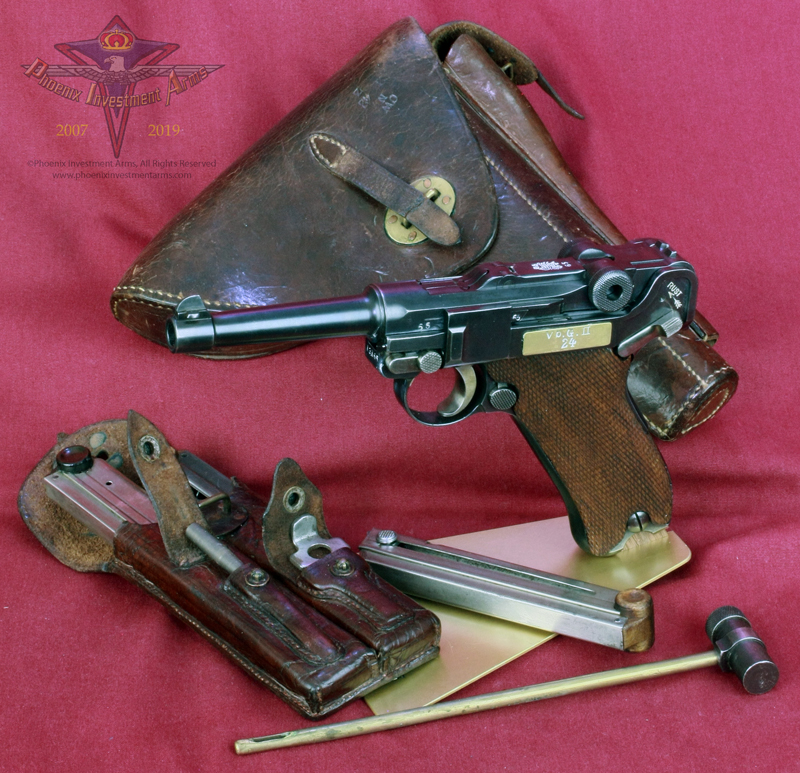 |
|
This is a pre-WWII Parabellum manufactured by DWM for a contract to the Dutch for the East Indies Army. It was designated the M11 by the Dutch and only 3,820 were delivered in August/September 1928 within the range of 10182 to 14001 (inclusive). They had the 102mm barrel, standard 1906 squeeze-grip safety, were 9mm and lacked the lug for a butt-stock. (2071) |
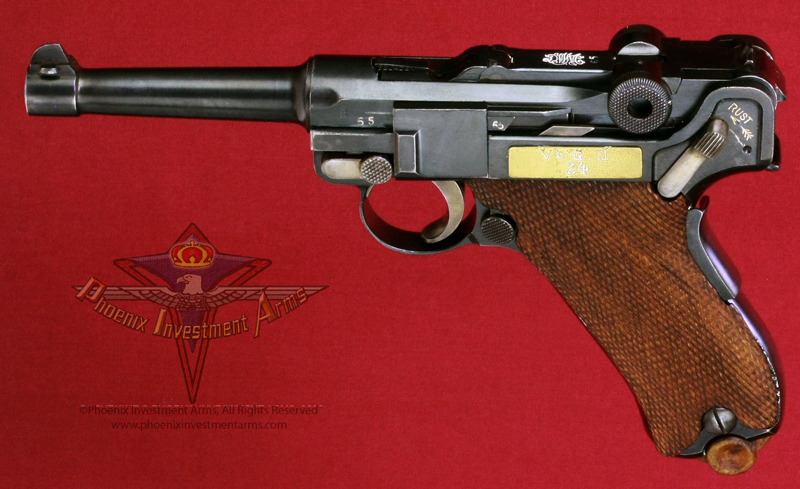 |
NOTE: Photographs taken today
with the high mega-pixel camera show more than we sometimes can see with
the human eye. Magnified close-ups show us tool marks and natural
surface conditions that one normally doesn't see in the ordinary
handling of the weapon. Photographs are
copyrighted, all rights reserved, any extraction, reproduction or
display of gun pictures without the express consent of the Phoenix
Investment Arms is strictly prohibited. Thank you for your cooperation. |
| MEMORIAL WEEK SPECIAL | |
Anyone ordering this 1928 Dutch East Indies Parabellum Rig during Memorial Week at the offering price will also get a copy of the Martens & de Vries comprehensive book on the Dutch Luger. Over 250 pages of pictures, text and illustrations to complement this fabulous gun. Over $250 value. 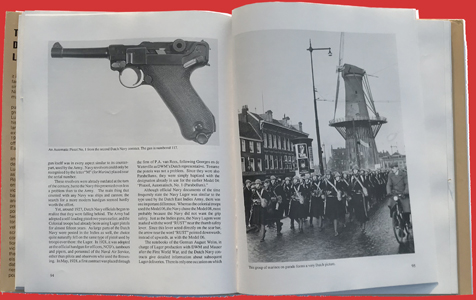 |
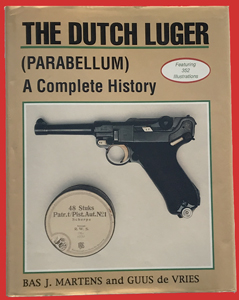
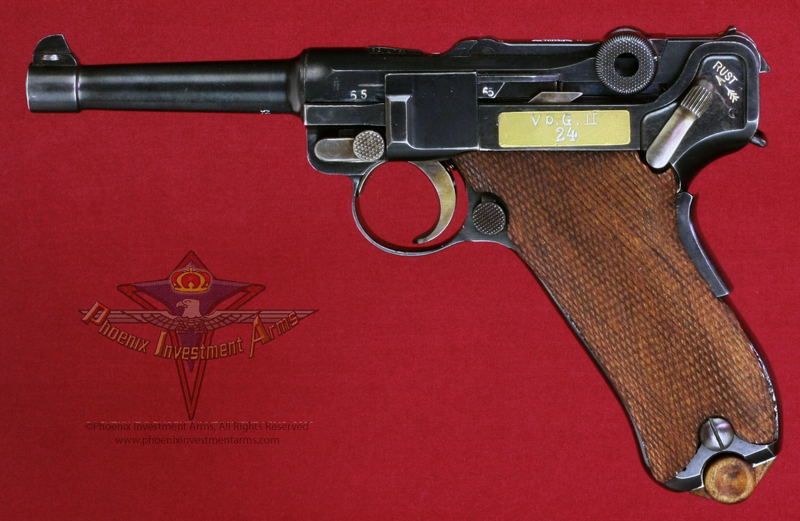
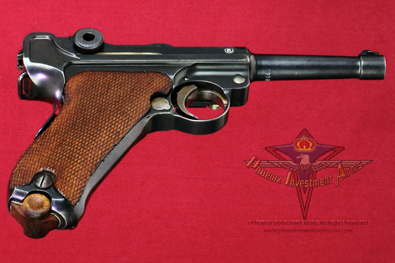
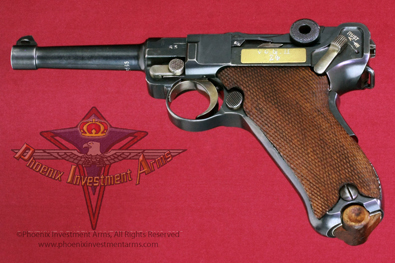

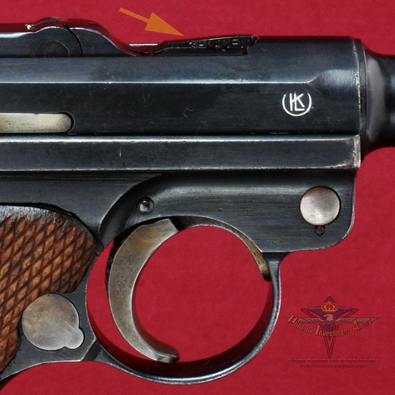
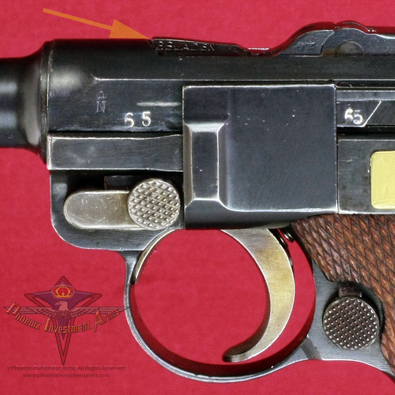
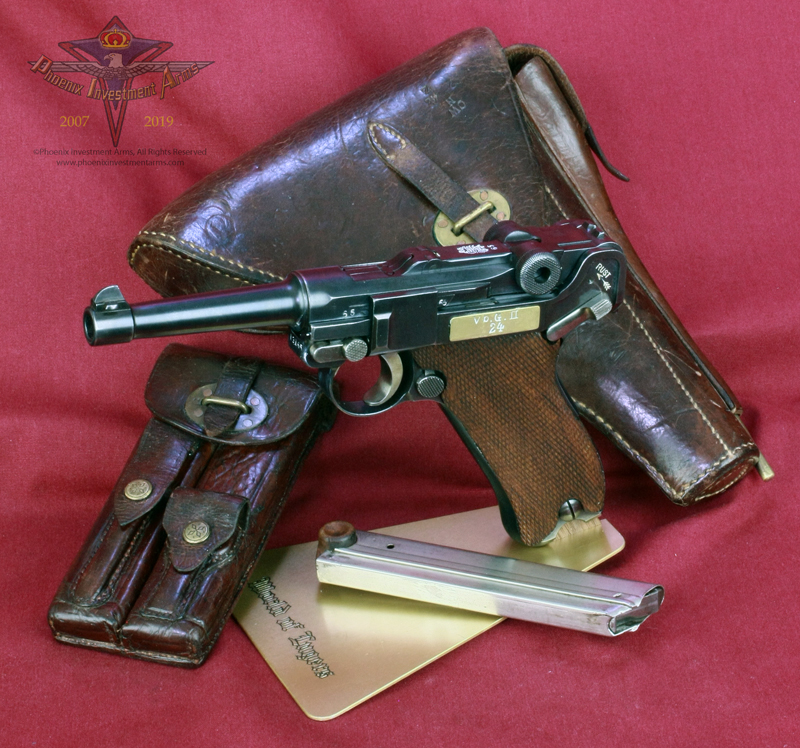
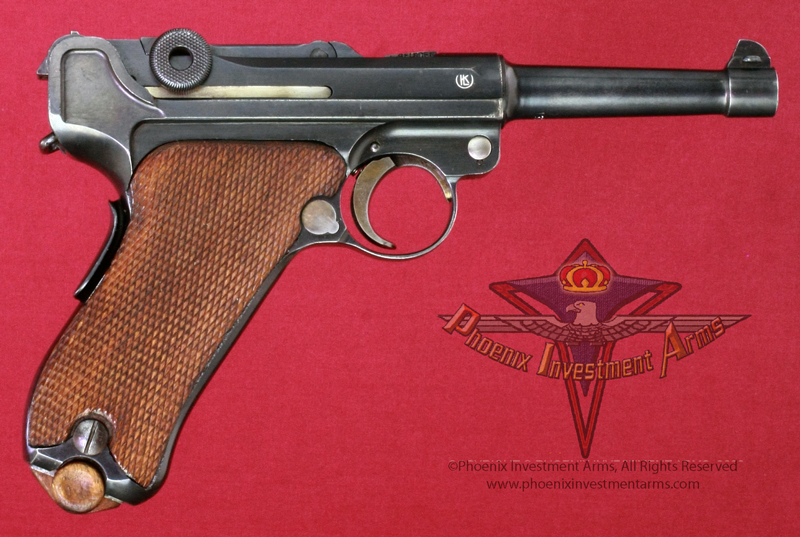
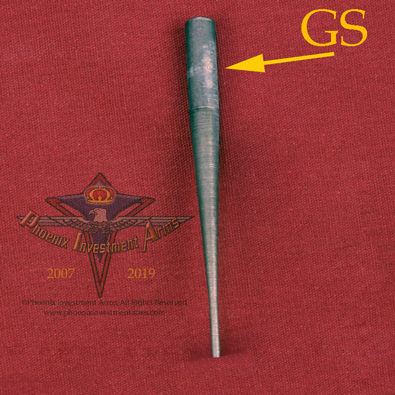
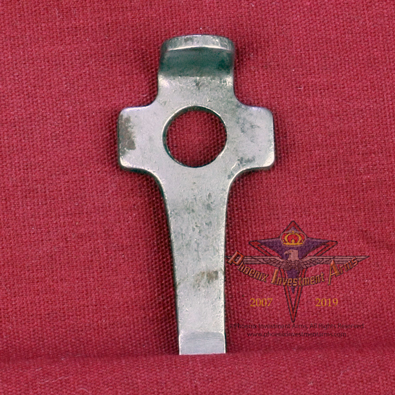

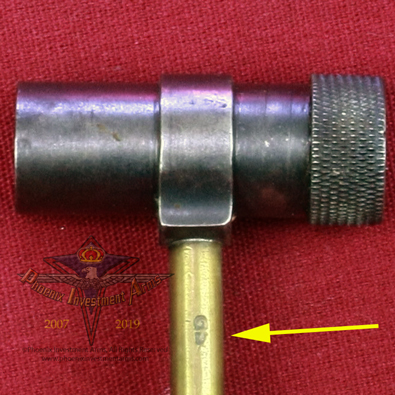
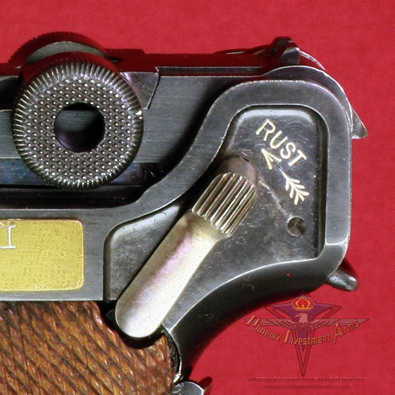
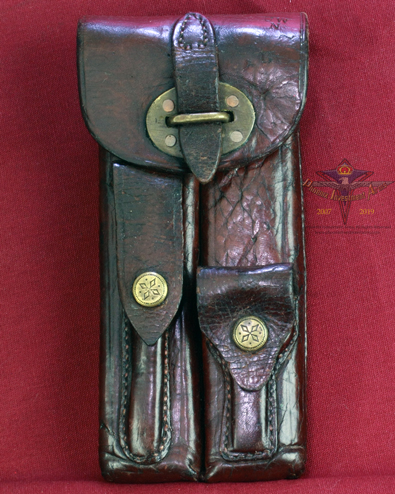
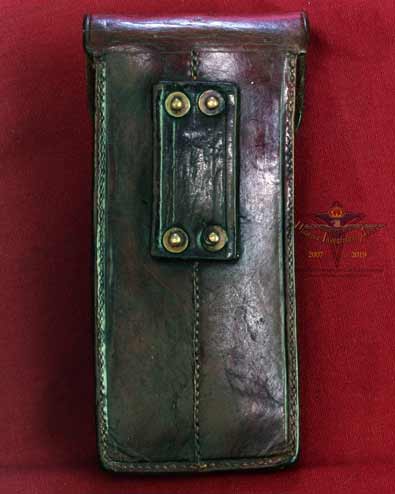
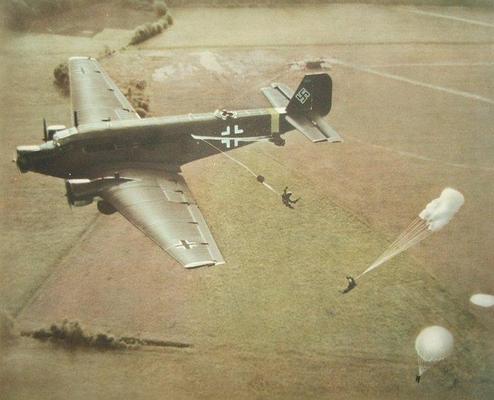
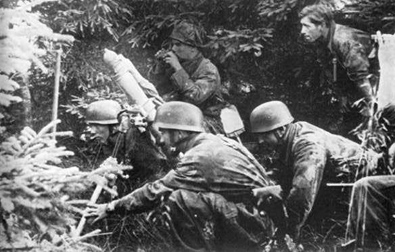
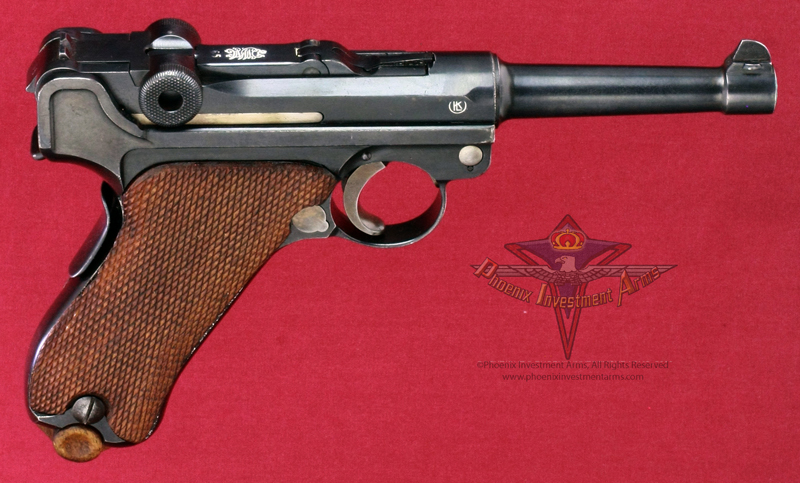
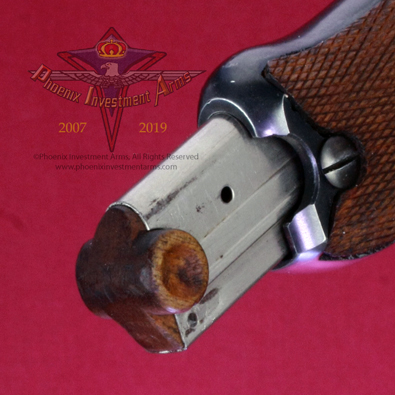
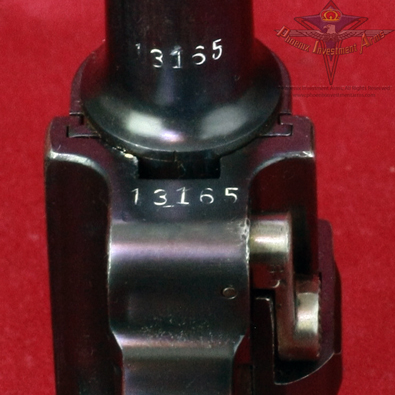
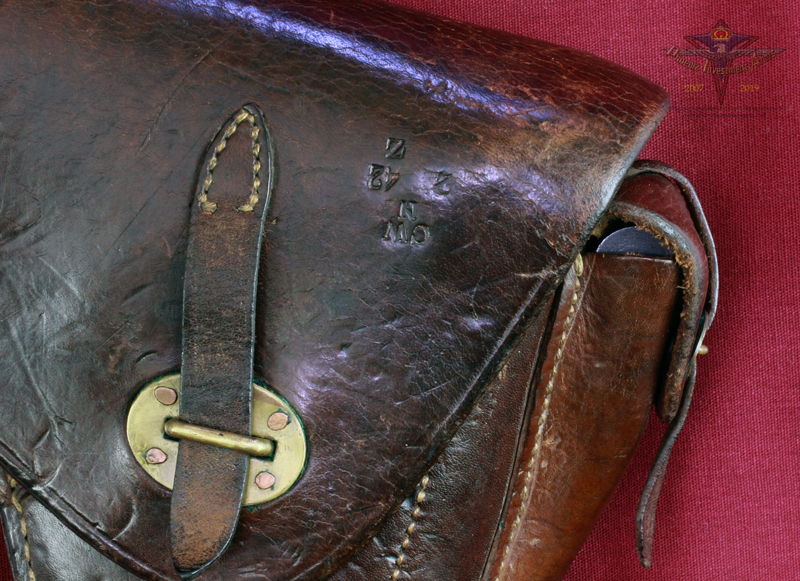
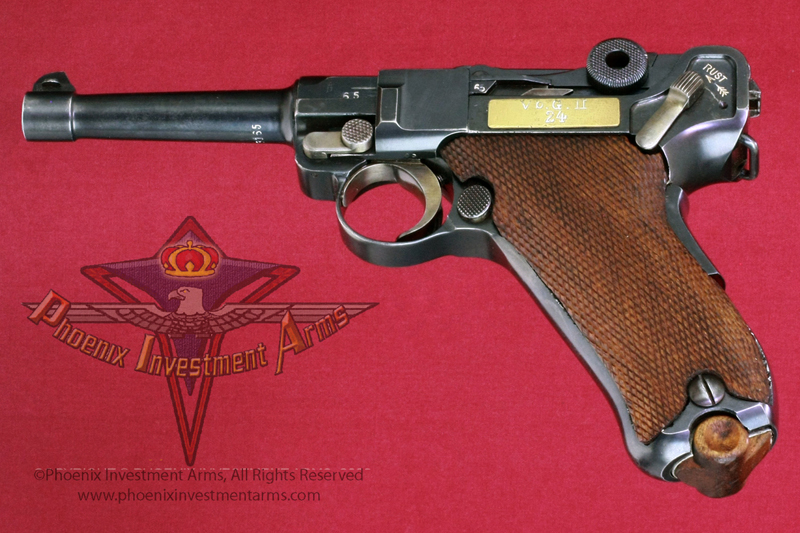
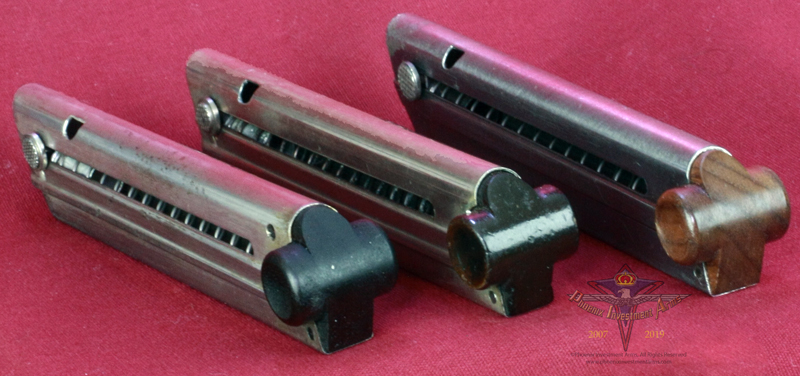
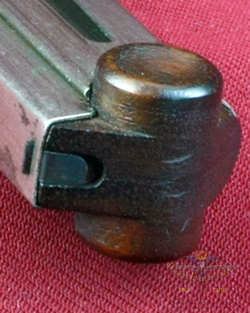 Above the three magazines that come with this gun represent the DWM, metal sleeves crimped and with the wooden bottom. The Dutch East Indies
M11 had three types of magazine. The standard magazine with the rear
pin, a double pinned magazine and then this one pictured on the left (not included), to enable the
inside of the magazine to be cleaned. It consisted of a metal
spring at the base of the magazine with a folded lug of spring fitted in
the slot to the rear. By pushing on the on the lug at the rear you could
release the spring and remove the base for cleaning. This was not a long
term solution and quickly wore out and these magazines were
discontinued.
Above the three magazines that come with this gun represent the DWM, metal sleeves crimped and with the wooden bottom. The Dutch East Indies
M11 had three types of magazine. The standard magazine with the rear
pin, a double pinned magazine and then this one pictured on the left (not included), to enable the
inside of the magazine to be cleaned. It consisted of a metal
spring at the base of the magazine with a folded lug of spring fitted in
the slot to the rear. By pushing on the on the lug at the rear you could
release the spring and remove the base for cleaning. This was not a long
term solution and quickly wore out and these magazines were
discontinued. 